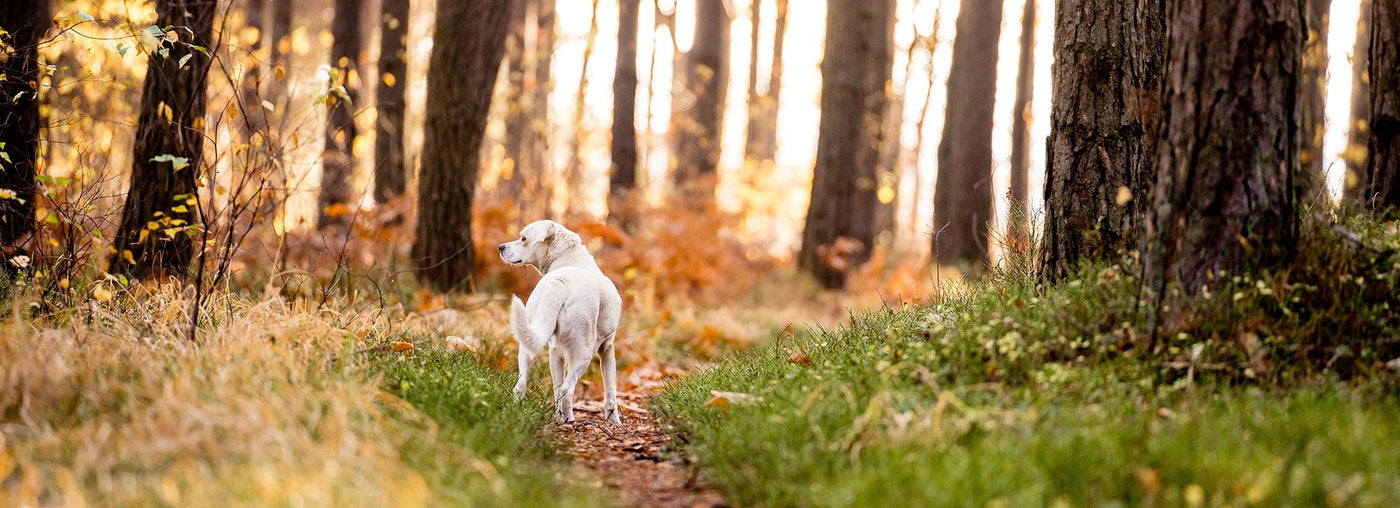Through our Dorwest Foundation, we’re proud to support Eye In The Sky Drones — a not-for-profit organisation founded by HM Forces Veteran Dave Rimmer, dedicated to reuniting lost dogs with their families.
Sadly, many dogs go missing during fireworks season, when loud bangs and bright flashes can make even the calmest dogs panic and run when out on a walk. It’s an incredibly distressing experience for any owner, but knowing what to do in those first few moments can make all the difference.
With years of experience helping to safely locate missing dogs, Dave has shared his expert advice and top tips below to guide you through what to do if the unthinkable happens.
Every dog owner’s worst nightmare is watching their beloved pet bolt out of sight or realising, in a moment of panic, that they have vanished. The first 24 hours are critical in finding your dog, and your response in those initial moments can make all the difference. While different breeds and personalities may cause different challenges, some dogs are more prone to running due to prey drive, while others may flee out of fear, this guide provides a general rule of thumb for what to do in the first 24 hours if you're even in this situation.
Why did your dog go missing?
Understanding where and why your dog disappeared is key to knowing how to react. The approach to finding a dog that has bolted in fear differs from searching for one that has run off chasing a scent or disappeared without explanation.
If your dog has bolted because they are scared
Some dogs will run in sheer panic in reaction to loud noises, getting spooked by other dogs, or when they are uncomfortable in unfamiliar environments. Fireworks, gunshots, thunderstorms, or even a car backfiring can send them sprinting without direction. This is especially common in rescue dogs or nervous breeds like Greyhounds or Whippets.
Initial actions:
- Stay put or return to the last known spot – Dogs that run in fear often circle back to where they last saw their owner once they calm down. Remain where you are for as long as possible. If it’s unsafe to stay indefinitely, leave familiar scent items such as a piece of clothing or a blanket near the location.
- Do not chase – A scared dog will keep running if they feel pursued. Instead, sit down, lower yourself to their level, and use a calm, reassuring voice. Avoid shouting, as this may increase their panic.
- Leave scent items – Dogs rely heavily on scent. If you have anything with a familiar scent your jacket, a blanket, or even an unwashed T-shirt—leave it near the spot they bolted from. Placing a small bowl of their food or some treats nearby can also help.
- Ensure someone stays with the car – If you drove to the location, have someone remain near the vehicle while occasionally turning the engine on and off, as the sound and scent can help attract your dog back.
- If you walked from home, make sure someone is waiting there – If your dog is familiar with their home area, there’s a good chance they may try to return on their own. Make sure someone stays home, or at the very least, leave access open (such as an unlocked gate or door) so they can get inside safely.
Follow-up actions if they haven't returned:
- Spread the word quickly – Time is of the essence. Alert local dog groups on social media, contact vets, and let nearby residents know in case your dog is spotted. Share a clear photo, last known location, and any distinguishing features.
- Check hiding spots – Scared dogs tend to seek shelter, such as under bushes, behind buildings, or inside sheds. If you are in a wooded area, check dense vegetation and low-lying areas where they might have burrowed.
- Use a calming approach if spotted – If you see your dog but they are still panicked, do not rush toward them. Instead, sit down, speak softly, and try to lure them with a familiar object or treats. Some dogs may approach if you act as if you’ve found something interesting on the ground.
If your dog has bolted chasing something
Dogs with a high prey drive, such as Whippets, Spaniels, Huskies, Beagles, and Terriers, can take off after squirrels, deer, or even birds. Once in pursuit, they may run long distances without realising how far they’ve gone.
Initial actions:
- Stop and listen – After the initial sprint, dogs often pause to reorient themselves. Calling their name in an upbeat tone may work once they stop running. Avoid panicked shouting, as it might make them think they are still in the chase.
- Check open fields and trails – If you are in an area with trails, meadows, or open spaces, search along these routes. Dogs tend to follow paths of least resistance when running.
- Use a whistle or favourite command – If your dog has a recall cue or responds to a whistle, use it sparingly. Too much calling may make them think they’re being pursued.
- Leave your car running intermittently – If you drove, follow the same tactic of occasionally turning the engine on to attract their attention. If they associate your car with rides home, they may return.
- If you walked from home, make sure someone is waiting there - If your dog is familiar with their home area, there’s a good chance they may try to return on their own. Make sure someone stays home, or at the very least, leave access open (such as an unlocked gate or door) so they can get inside safely.
Follow-up actions:
- Inform local farmers or landowners – If you're in a rural area, let farmers know, as dogs can end up in their fields or barns. Provide a phone number in case they see your dog.
- Check water sources – Running dogs often end up near streams, ponds, or rivers when they need to drink. If you are near a body of water, scan the area.
- Search during quiet hours – Early morning or late evening are the best times to search, as the environment is quieter, and your dog is more likely to hear you.
If your dog has just vanished
Sometimes, a dog seems to disappear without any obvious reason. They may have gotten lost while sniffing, become trapped somewhere, or even been picked up by a passerby.
Initial actions:
- Retrace your steps – Walk back along the route you took, looking carefully in all directions. Call your dog’s name in a calm and familiar tone.
- Check enclosed spaces – Dogs can sometimes get trapped in fenced-off areas, ditches, or even behind thick bushes. Look in areas where they might be stuck.
- Ask other walkers – Speak to people in the area and ask if they’ve seen your dog. Other walkers, cyclists, or even homeowners may have spotted them heading in a particular direction.
- Leave a familiar item – If possible, leave a piece of clothing, their bed, or a toy in the location they were last seen. This will give them a familiar scent to follow and return back to.
Follow-up actions:
- Spread the word – Immediately post on local lost pet groups, neighbourhood social media pages, and contact local shelters and vets. Many people who find a lost dog will take them to a nearby vet, so it’s always worth calling around local practices and even those a little further afield too.
- Check CCTV or ask around – If your dog went missing near homes or businesses, ask if anyone has security cameras that might have captured which way they went.
- Set up a safe return point – If you suspect your dog might be trying to return to a familiar place, leave food and water in a visible but safe location near where they went missing.
The first 24 hours: What you should do
The first 24 hours are crucial in recovering a lost dog. Here’s a recap of the most effective steps:
- Stay near the location where your dog went missing, especially if they bolted in fear.
- Keep your car engine running at intervals to signal familiarity, and have someone remain by the vehicle if possible.
- If you walked from home, ensure someone stays there or leave an access point open in case the dog returns.
- Spread the word quickly on social media, with local shelters & vets, and among people in the area.
- Leave scent items and familiar objects at the last known location.
- Check common places where lost dogs may go, such as water sources, fields, or shelters.
- Continue searching in the early morning and late at night when it is quieter and dogs are more likely to emerge.
- Contact local volunteers who help rescue lost dogs like Eye In The Sky Drones to come and help you in your search. They have advanced equipment and more people, all of which can increase your chances of finding your dog quicker.
Watch Dave’s quick video as he shares the three most important things to do if your dog goes missing:
Acting swiftly but calmly increases the chances of finding your dog before they travel too far. Most importantly, never give up hope, many lost dogs are found within hours or days, but persistence is key. By following these steps, you maximise the chances of a happy reunion with your best friend.
For more information or to contact Eye In The Sky Drones head over to their website. To hear about their latest rescues go to social media channels @eyeinthesky_drones. Plus, discover their top tips about what to do if you’re ever in this kind of situation on their blog www.eyeinskydrones.com/blog.






































